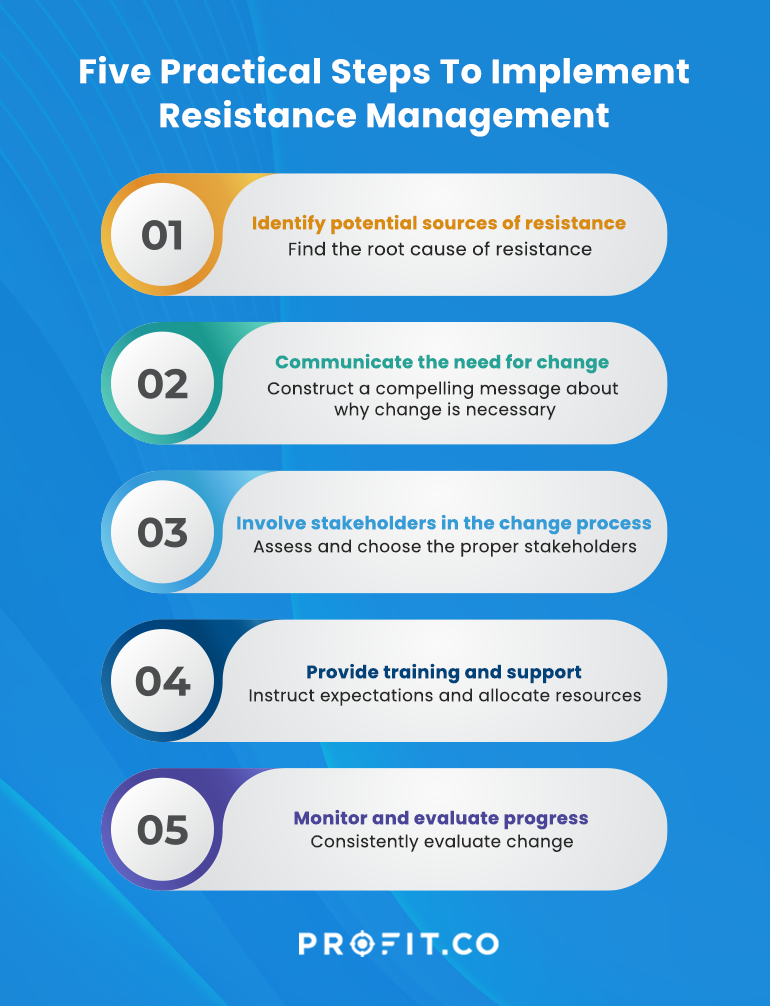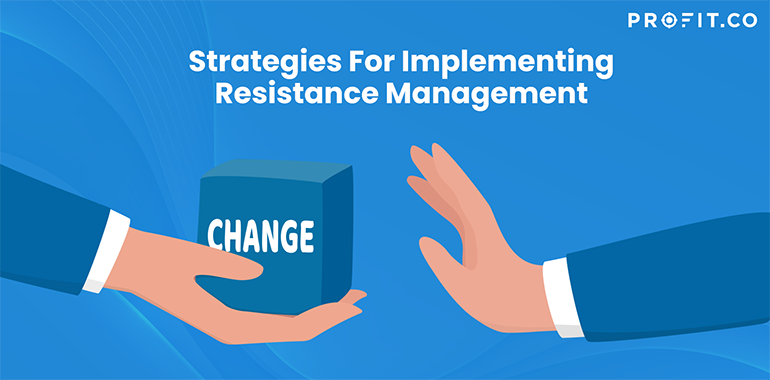Change initiatives often fail because organizations and individuals are highly resistant to change. One way to overcome this challenge is to include resistance management in every change initiative and utilize effective strategies.
Let’s explore resistance management and how proper implementation can ease your team through any change initiative.
What is Resistance Management?
Resistance management is a strategic approach to increase support for a change initiative in an organization. Resistance to change means stakeholders are unsupportive of a transformation and adopt behaviors that prevent change, such as disengaging in communication, acting out, controlling behavior, and absenteeism. Resistance management engages shareholders to address their concerns.
The secret of change is to focus all your energy, not on fighting the old, but on building the new.
Reasons Why Resistance to Change Occurs
Resistance to change is a typical and expected result in every organization because change triggers fear and anxiety. Change is natural, and so is having doubts about the outcomes of change.
However, a resistance manager must also understand other reasons behind stakeholder behavior, including:
- A company’s history of implementing change initiatives
- The quality of the change champion (competence, authority, credibility, communication skills)
- The impact of the change on work (increased responsibilities, heavier workload, learning new systems)
- Individual factors (the employee’s age, family, health, finances, and beliefs)
Managing change resistance can be complex and requires careful planning and implementation. Considering the full scope of your team’s situation and empathizing with employee concerns will help ease the implementation process.

Five Practical Steps to Implement Resistance Management
Change is complex, but implementing meaningful steps makes all the difference.
Successful management resistance to change strategy comprises of the following essential steps:
1. Identify potential sources of resistance
The negative behaviors mentioned earlier are only the symptoms of resistance to change.
A resistance manager, therefore, must look at the root causes of these behaviors, such as:
- A lack of awareness
- Expectations of increased workloads
- Peer pressure from colleagues who resist the change
- Expectations of failure if previous change initiatives also failed
- Lack of support from the leadership team, etc.
Once you identify these root causes, you can tailor your resistance management strategy to address barriers, make proactive decisions, and get more buy-in for the change initiative.
Bridge the Strategy Execution Gap with Profit.co
2. Communicate the need for change
As a resistance manager, your primary role is to construct a compelling message about why the change is necessary for your organization. Ensure your team understands the initiative’s importance and how each person contributes to and benefits from the change.
A clear, genuine message can tremendously reduce resistance to change. Use more positive language and avoid “must” and “should.” Also, be mindful of your tone and body language as you champion strategy for change.
3. Involve stakeholders in the change process
Resistance management stakeholders include individuals, executives, suppliers, sponsors, and customers who oppose your change initiative. Each stakeholder plays a key role in change management and needs a different resistance management approach.
Ideally, assess all stakeholders and choose those who support the change to lead the transformation among their peers. Then, offer support to the most change-resistant stakeholders, e.g., upskilling to adapt to the change or reassurance about job security and career advancement.
4. Provide training and support
Change management training is essential to resistance management, whether the change is transitional, transformational, or developmental. Training demonstrates transparency and promotes engagement and collaboration throughout the change initiative. It also ensures successful change adoption: stakeholders have a reliable support structure, a shared commitment to the process, and an open forum to share questions and ideas.
5. Monitor and evaluate progress
Managing change resistance requires consistent evaluation to ensure your efforts achieve the desired outcomes. Progress tracking is an essential element of successful change management.
A resistance manager can:
- Meet shareholders regularly to gather feedback about the change initiative.
- Nominate change champions to address resistance on a one-on-one or departmental basis.
- Assess change receptiveness among mid-level and top leadership.
- Use questionnaires and surveys at critical stages of the change initiative.
- Observe and address resistance behaviors like lack of follow-through, missing change-related training or meetings, or any other barriers to change.
How can OKRs help Resistance Management? Make the Change Process More Effective?
OKRs (Objectives and Key Results) can help with resistance management by providing a clear framework for setting and aligning goals, fostering transparency, and encouraging collaboration. This goal-setting framework ensures that the organization is focused on achieving specific outcomes related to the change and can measure progress toward those outcomes. OKR change management when applied stretigically can minimize disruption and ensure the transition is implemented smoothly and effectively.
FAQs
1. What is resistance management?
Resistance management is a strategic approach to increase support for a change initiative in an organization.
2. What are some potential sources of resistance to change?
- A lack of awareness
- Expectations of increased workloads
- Peer pressure from colleagues who resist the change
- Expectations of failure if previous change initiatives also failed
- Lack of support from the leadership team, etc.
3. What are the steps to implement resistance management?
The five steps to implementing resistance management are:
- Identify potential sources of resistance
- Communicate the need for change
- Involve stakeholders in the change process
- Provide training and support
- Monitor and evaluate progress
Conclusion
Resistance to change is a natural reaction because we prefer the comfortable status quo rather than adapting to new mindsets, even if the change is for our benefit. However, this should encourage a resistance manager to implement a change initiative. The steps outlined in this blog can make managing change resistance more straightforward and rewarding. Mitigate resistance to change to enjoy the full benefits of business transformations today.

